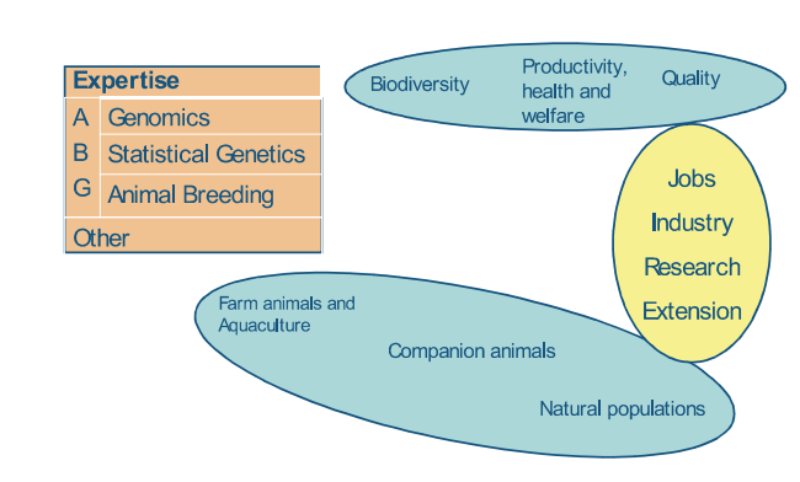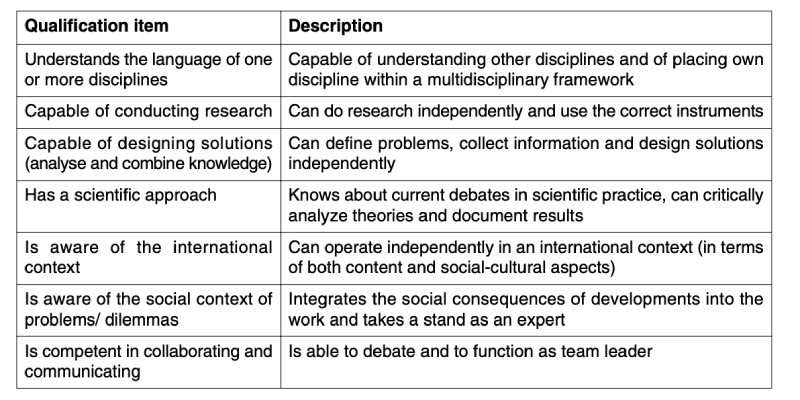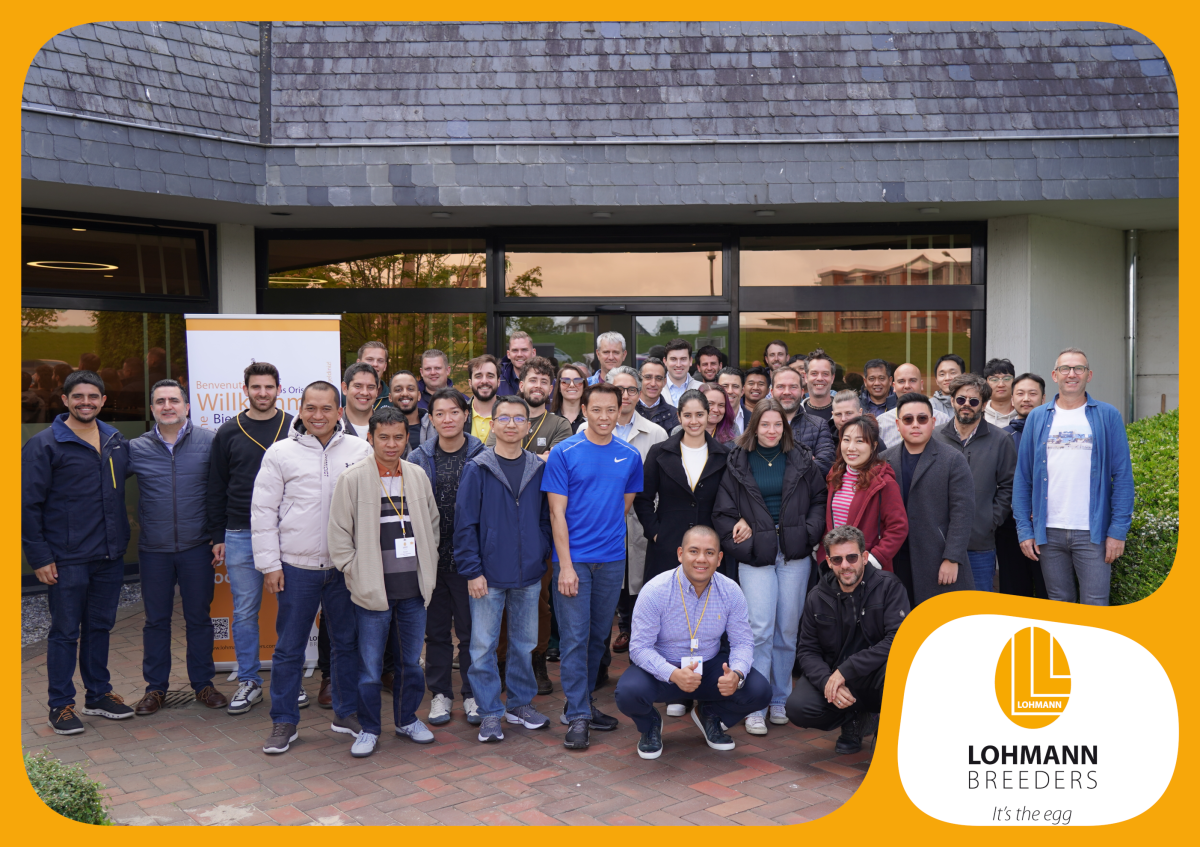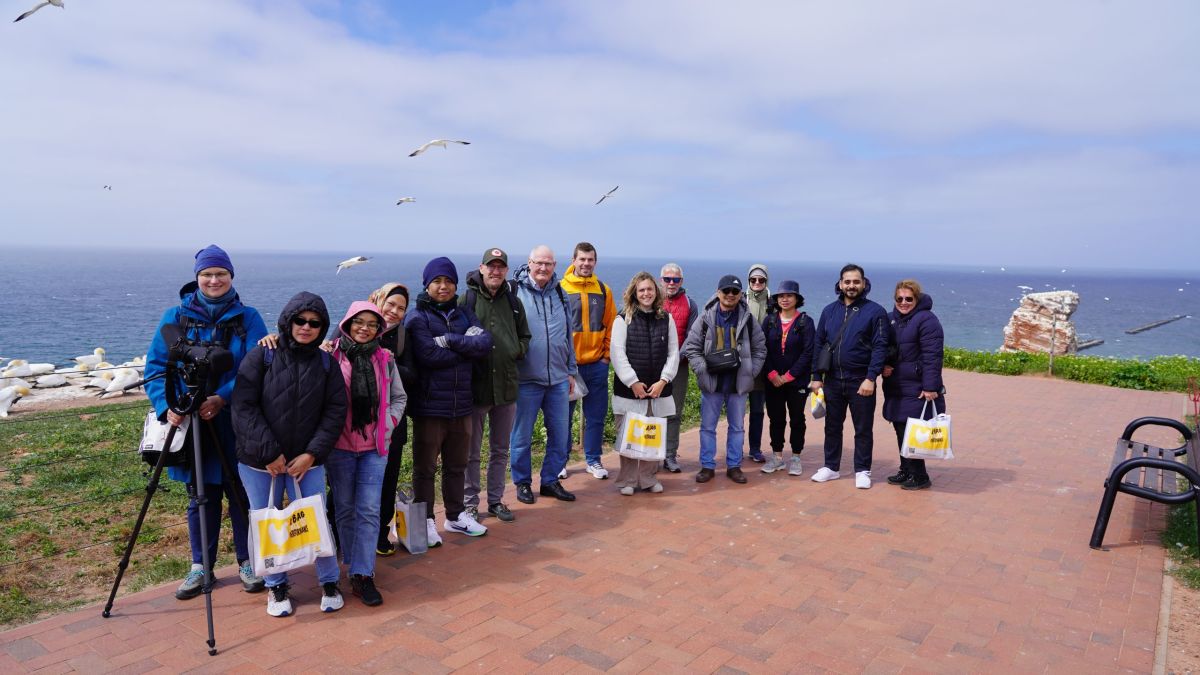Summary
The European Master in Animal Breeding and Genetics (EMABG) is a two-year MSc program provided
by six EU university groups with an active training and research program in the field of animal breeding
and genetics. The EMABG is a response to the need of highly qualified graduates in the internationally operating area of breeding farm animals and fish, and animals for other purposes. The EMABG
is recognized by the European Union as an Erasmus Mundus MSc program for a five-year period
and started in August 2007 with a group of 24 non-EU students. The students conduct the major part
of their training at two of the participating universities, and also gather for joint EMABG events.
Successful students are awarded two national masters degrees (double degree).
Successful students are awarded two national masters degrees (double degree).
Introduction
The integrated European Master of Science program in Animal Breeding and Genetics (EMABG) aims to offer high quality international training in its domain. EMABG is developed by a consortium of universities from six EU member countries. In 2007, EMABG was recognized as Erasmus Mundus course by the European Commission which resulted in funding for a period of 5 years. The first group of students started in August 2007. The EMABG aims to provide a European dimension in the knowledge-intensive area of farm animal breeding operating internationally. European animal breeding organisations are world leaders, with global market shares of up to 90%. The success of European breeding owes much to its longstanding close ties with universities and research institutes, fostering the dissemination of knowledge to the farm and individual breeder level. There is an increased need for people with a MSc degree in animal breeding worldwide, but the number of graduates is currently decreasing. The EMABG provides a response to the need for highly qualified graduates, as well as to the need to adapt education systems to the demands of the knowledge society. This paper presents the background and overall objective of EMABG, the content of the MSc program and the experiences of the first years.Background
Increased demand for a diverse, sustainable and plentiful supply of food at affordable price represents a challenge for agricultural systems. Livestock breeding is at the top of the animal production pyramid and hence defines the quality of all animals used in agriculture. Farm-animal selection has a great impact on farm-animal production as a whole, because the breeding response is cumulative and sustainable. Efficient reproduction techniques, such as artificial insemination, allow genetic improvement to be rapidly disseminated throughout the production chain. Europe has always played an important role in improving the major farm animal species worldwide, but as the 21st century begins, farm animal breeding is at a crossroad.
Opportunities for animal breeding and reproduction stem from the global need for a sustainable increase in food quality and quantity, as well as production efficiency. Food consumption of animal origin is expected to grow by around 7% yearly over the next decade, and to keep rising for the next 15-20 years worldwide. Much of this increase will be in developing countries. Improved quality means safe, healthy food and robust, healthy animals. An improvement in production efficiency can help to reduce the impact of animal production on the environment. The overall objective is to promote breeding of farm animals that is both biologically and economically sustainable, taking into account social responsibility and cultural and regional values.
Breeds of domesticated farm-animal species (including fish) are the primary biological capital for livestock development, food security and sustainable rural development. Indigenous farm animals may appear to produce less than highly specialized exotic breeds, but the indigenous animals are highly productive in their use of local resources and are more sustainable over the long term. Cuttingedge agricultural technology is needed to make best use of local genetic resources, but technology has to be set in local contexts and be applied in ways that recognize the special conditions of poor farmers.
To tackle the increasing needs for qualified graduates, six European universities jointly developed the two-year European Master of Science program in Animal Breeding and Genetics (EMABG), implemented as an Erasmus Mundus masters program with EU support, mainly scholarships. The EMABG aims at building capacities in the fields of animal breeding and genetics to meet the following challenges in developed and developing countries:
1. increase of livestock and fish production, while preserving the quality of the products and the welfare of animals;
2. development of sustainable animal breeding programmes that contribute to improved livelihood of farmers and efficient food chains;
3. development of sustainable breeding programmes that contribute to improved health and welfare of companion animals (including populations in zoos and nature reserves);
4. preservation of natural resources, especially biodiversity, which become scarcer and scarcer.
The EMABG is based on mobility of people, exchange of experiences among disciplines, and the establishment of a common high quality standard in higher education and training. The consortium brings together a broad range of complementary expertises, not only from the disciplinary or thematic perspective, but also from the experiences in developing countries, where each partner has strong research commitments.
Content and organisation of the MSc program
The scope of the EMABG MSc program is illustrated in Figure 1. The EMABG concentrates on use of quantitative and molecular genetics for animal breeding purposes. This involves a range of species of farm animals (ruminants, pigs, poultry and horses), fish and other aquatic species, companion animals, as well as natural populations (in wild or zoos). For farm animals and aquaculture, the genetic concepts is discussed in a holistic view, considering the role of animal breeding in the production system and the global use of animal genetic resources for agricultural and various society needs.Knowledge on animal breeding and genomics is used on themes such as animal welfare, sustainability, food security, food quality and safety, ecology, as well as other animal functions such as companion and sport.
Figure 1: Scope of the European Master in Animal Breeding and Genetics
 The EMABG is truly international and has many links to global research and to capacity building in
developing countries. The expected learning outcomes of EMABG are presented in Table 1. The
length of the EMABG is 2 years (120 ETCS). Each student spends the two years of the MSc program
at two different participating universities. Two joint courses for all students are organized: an introduction course at the start and a one week summer course between years 1 and 2. EMABG builds on existing MSc programs in the participating universities. It consists of required and elective subjects:
disciplinary and complementary subjects, problem oriented study, and thesis research. EMABG
students follow courses jointly with the university’s other students. EMABG offers a tailor-made study
plan that meets the needs of the individual student. Coherence and quality of the study plan are
discussed and approved by the EMABG study coordinators at the respective universities to ensure that
the study plan meets the requirements to award a double degree. Around 20 scholarships are provided
yearly. Information about EMABG is available at www.emabg.eu
The EMABG is truly international and has many links to global research and to capacity building in
developing countries. The expected learning outcomes of EMABG are presented in Table 1. The
length of the EMABG is 2 years (120 ETCS). Each student spends the two years of the MSc program
at two different participating universities. Two joint courses for all students are organized: an introduction course at the start and a one week summer course between years 1 and 2. EMABG builds on existing MSc programs in the participating universities. It consists of required and elective subjects:
disciplinary and complementary subjects, problem oriented study, and thesis research. EMABG
students follow courses jointly with the university’s other students. EMABG offers a tailor-made study
plan that meets the needs of the individual student. Coherence and quality of the study plan are
discussed and approved by the EMABG study coordinators at the respective universities to ensure that
the study plan meets the requirements to award a double degree. Around 20 scholarships are provided
yearly. Information about EMABG is available at www.emabg.eu
Table 1: Learning outcomes of EMABG in terms of Dublin descriptors

Participation
In the first year, we received 240 applications. After the selection procedure, 24 students started the program in August 2007. In subsequent years, the number of applications increased to over 300 in 2010. The number of students that started the program has varied between 22 and 25. The students originate from 33 countries mostly from Africa and Asia (Figure 2). However, we have observed a slight increase in participation of EU students, a trend that is expected also in coming years due to availability of scholarships for EU students. In 2009, 23 students successfully completed EMABG and found a job soon after. A relatively large proportion obtained a research or PhD position within or outside the EU (Figure 2).So far, students enrolled in EMABG have been highly motivated in their studies, and overall their study results have been very good. Most of the students are very pleased with their EMABG studies.
The students stay in close contact with each others and also with the regular university students. The joint EMABG events, i.e. introduction course, summer course between the two years and a joint graduation ceremony are important for connecting the students, as well as the EMABG universities.
Already the first batch of students formed an EMABG student union and an alumni network. Minor difficulties to mention are coping with the differing formal requirements between universities.
An important positive effect of EMABG is that it contributes to internationalization of the regular teaching at the participating universities, meaning also that interest and understanding of international issues increase among the national students of that university. EMABG also leads to increased contacts between the participating universities, and enhance the profile and visibility of higher education in the European Union.
Figure 2: Continent of origin of students that started EMABG between 2007 and 2009 and
overview of jobs of students that graduated in 2009








